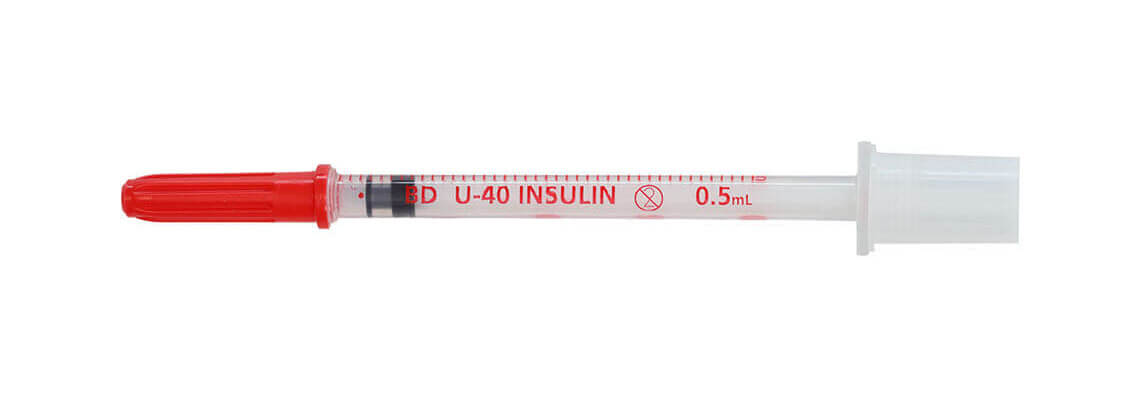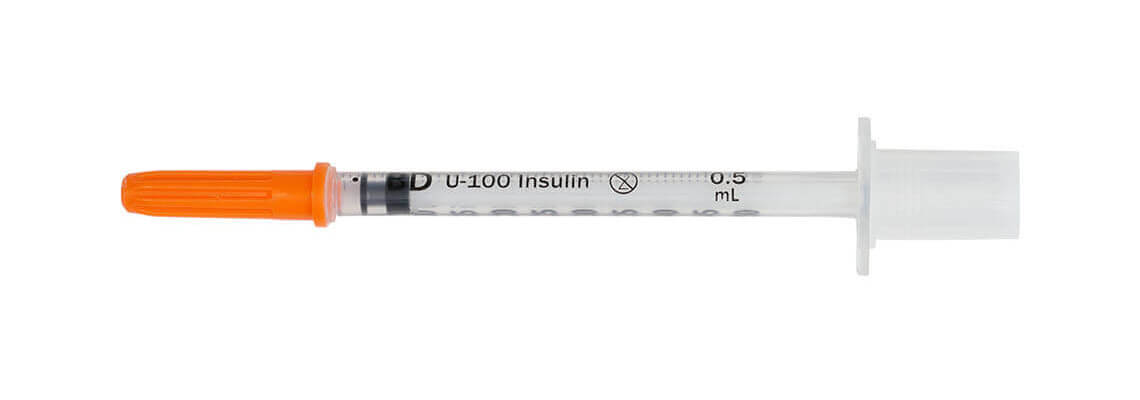Insulin syringes are a crucial tool for individuals managing diabetes, allowing for precise administration of insulin. Among the most commonly used syringes are U-40 and U-100 insulin syringes. These syringes are designed to match the concentration of insulin they are intended to deliver. Understanding the differences between U-40 and U-100 syringes is vital for safe and effective insulin administration.
Insulin Concentrations: U-40 vs. U-100
Insulin concentrations are denoted by the number of units of insulin per milliliter (ml) of fluid. The two most common concentrations are:
- U-40 Insulin: Contains 40 units of insulin per milliliter
- U-100 Insulin: Contains 100 units of insulin per milliliter
The “U” in U-40 and U-100 stands for “units,” indicating the number of insulin units in a given volume of liquid.
U-40 Insulin Syringes
U-40 insulin syringes are specifically calibrated to measure U-40 insulin. They are commonly used in veterinary medicine, as many animals, including dogs and cats, often require U-40 insulin for diabetes management. Each marking on a U-40 syringe corresponds directly to the units of U-40 insulin, making it easy to measure and administer the correct dose.

Key Features of U-40 Syringes:
- Designed for 40 units/ml insulin concentration
- Smaller overall dose compared to U-100 insulin
- Typically used for veterinary purposes
- Red cap on the syringe
U-100 Insulin Syringes
U-100 insulin syringes are calibrated for U-100 insulin, the standard concentration used in human diabetes management. These syringes are marked to ensure accurate measurement of insulin units for this higher concentration, which is the most prevalent type used globally.

Key Features of U-100 Syringes:
- Designed for 100 units/ml insulin concentration
- Standard for human diabetes treatment
- Available in various sizes (e.g., 0.3 ml, 0.5 ml, 1 ml) to accommodate different dose requirements
- Orange cap on the syringe
Differences Between U-40 and U-100 Syringes
The primary differences between U-40 and U-100 syringes are their calibration and the concentration of insulin they are designed to deliver. Using the incorrect syringe for a given insulin concentration can lead to serious dosing errors.
- Calibration: U-40 syringes are calibrated for lower concentration insulin (40 units/ml), while U-100 syringes are calibrated for higher concentration insulin (100 units/ml).
- Markings: The unit markings on U-40 syringes reflect the U-40 concentration, whereas U-100 syringes reflect the U-100 concentration. Using the wrong syringe could result in administering either 2.5 times too much or too little insulin.
- Usage: U-40 syringes are predominantly used in veterinary settings, while U-100 syringes are standard in human medicine.
Importance of Proper Syringe Use
Proper use of insulin syringes is critical to managing diabetes effectively. Incorrect syringe use can lead to hypo- or hyperglycemia, both of which are dangerous conditions. To avoid these issues:
- Always use the syringe that matches the concentration of your insulin
- Double-check the insulin concentration and syringe calibration before administering a dose
- Consult with a healthcare provider or veterinarian if there is any uncertainty about which syringe to use
When in doubt, seek guidance from healthcare professionals to ensure the safe administration of insulin.
